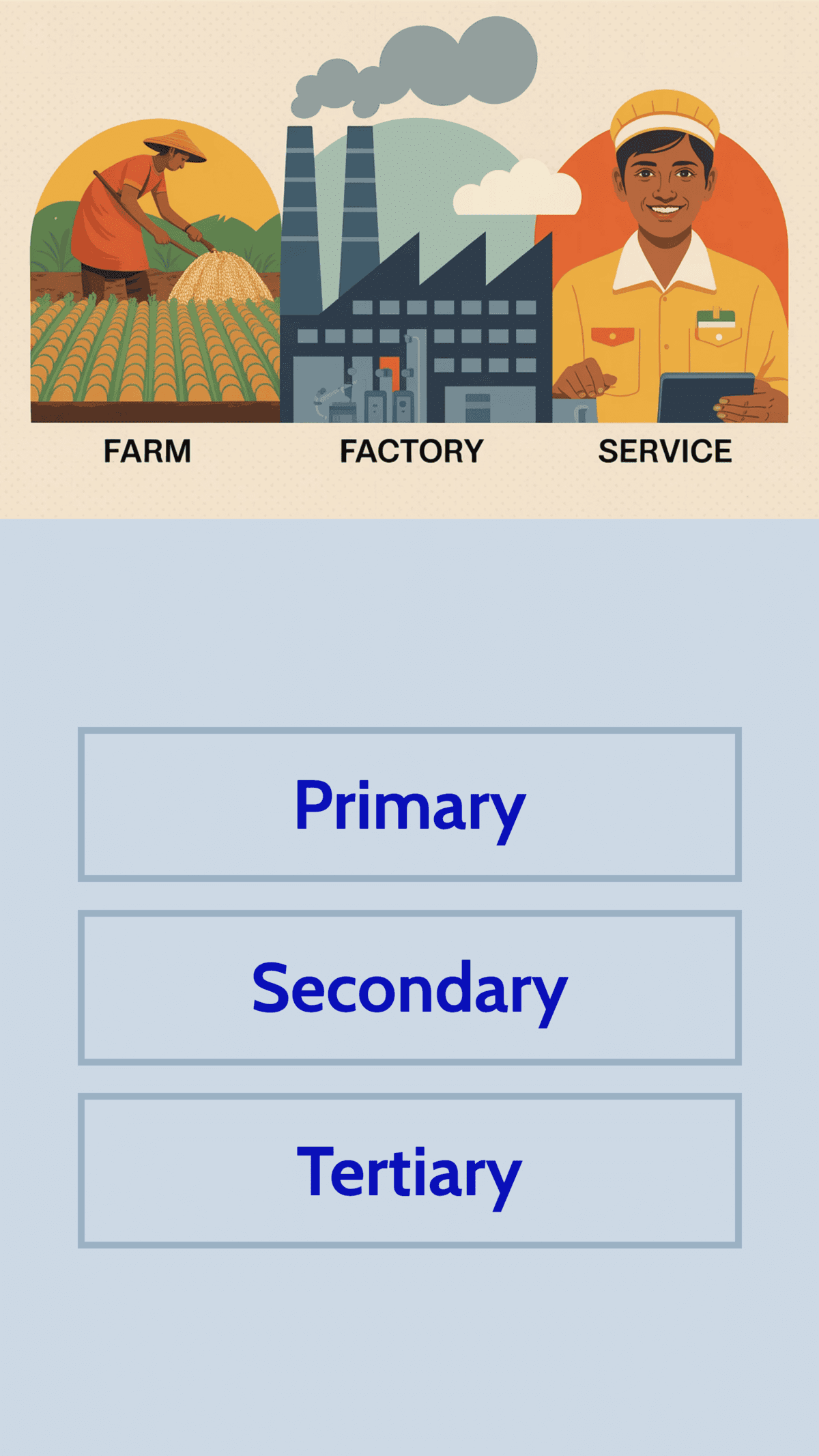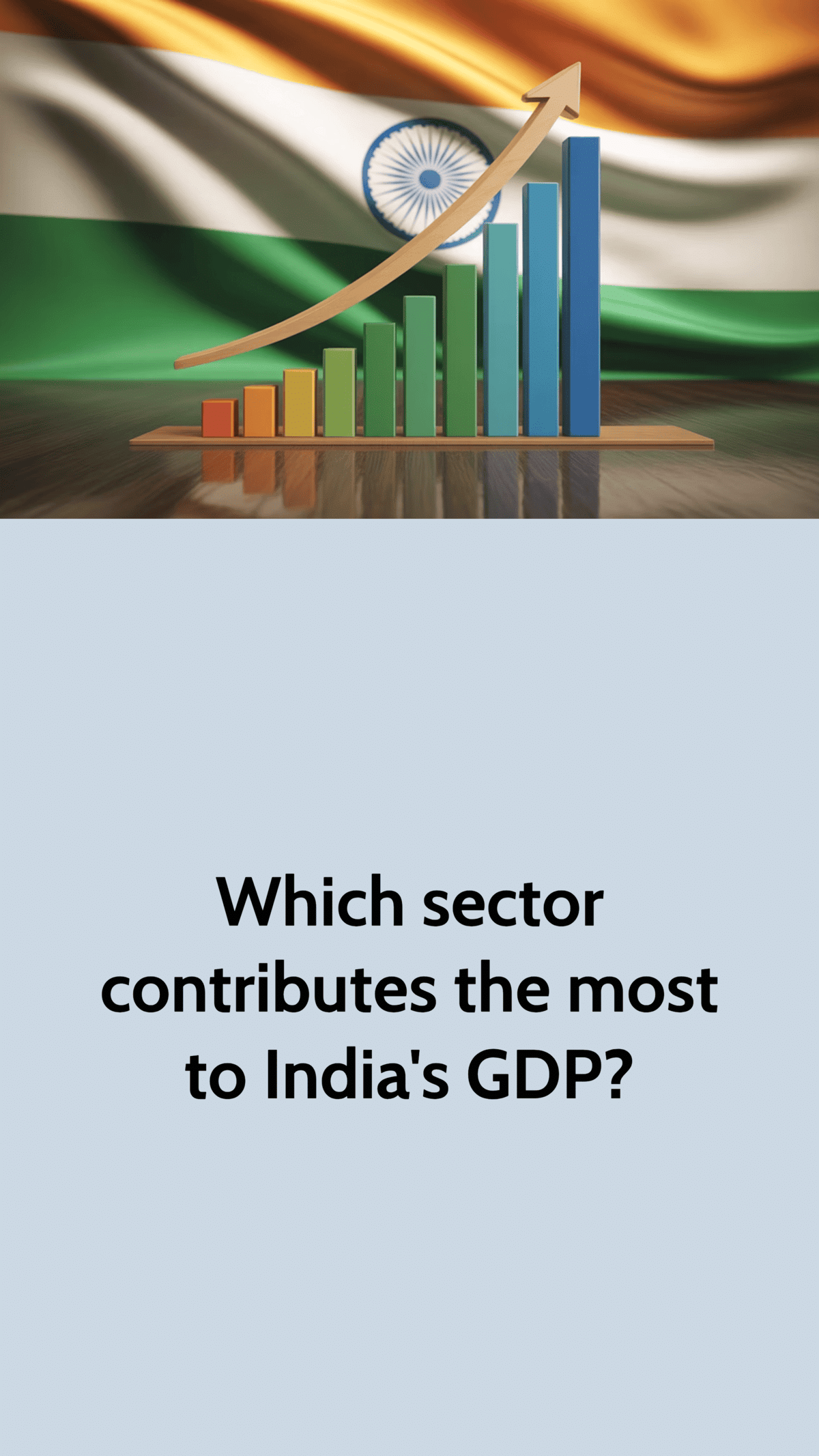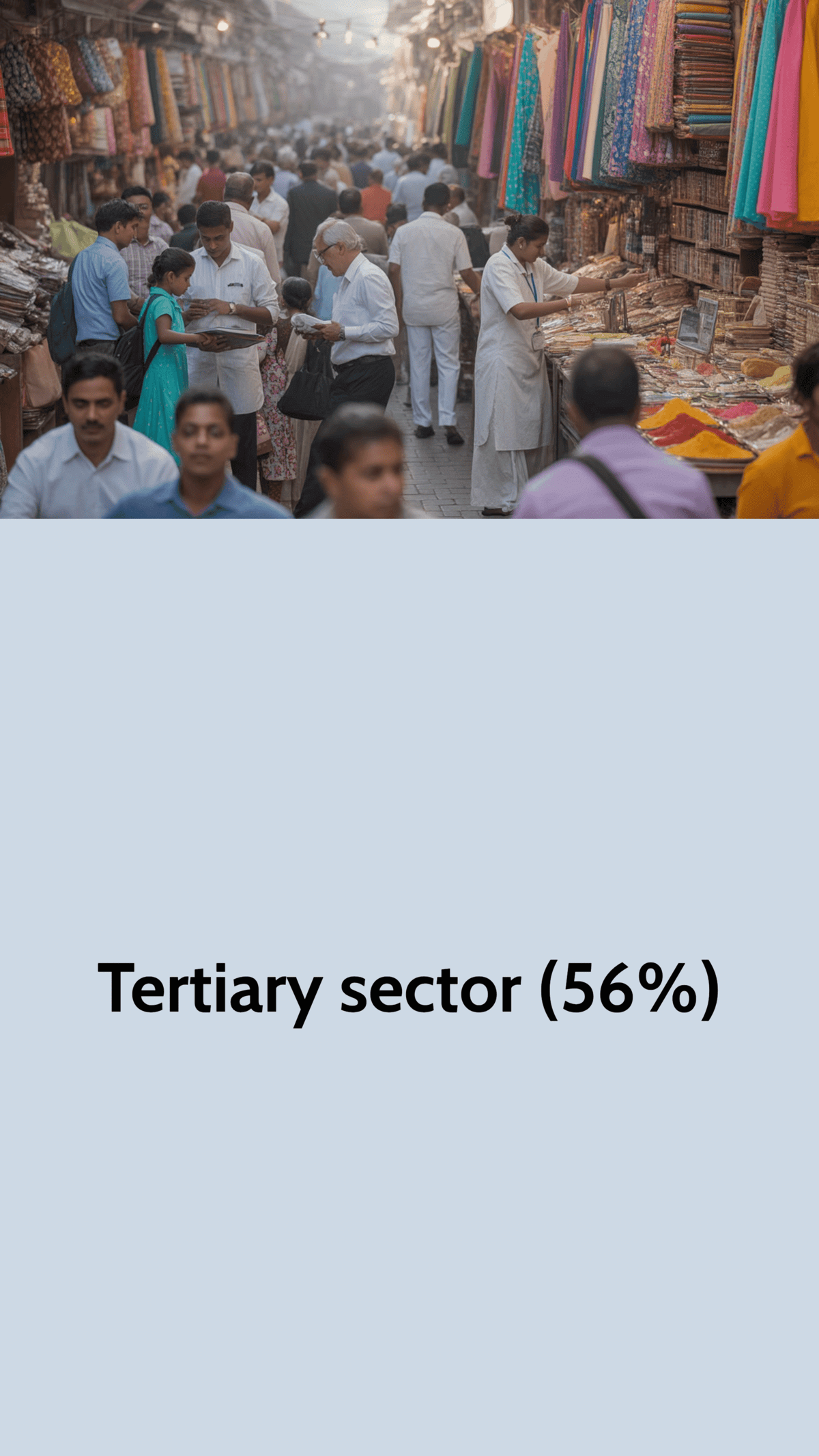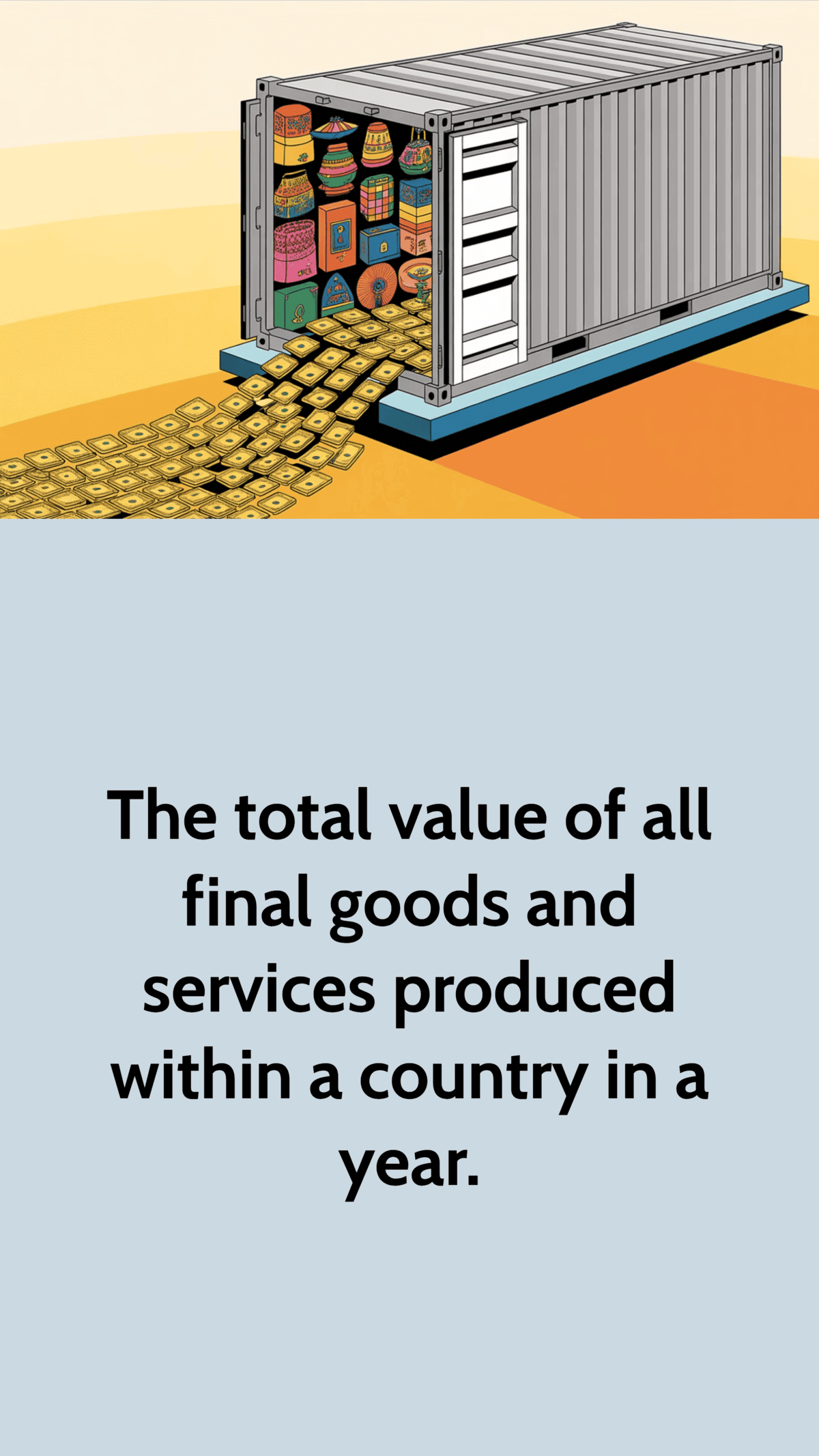 Unlock all Flashcards with EduRev Infinity Plan Starting from @ ₹99 only
|
Class 10 Exam > Social Studies (SST) Class 10 > Flashcards: Sectors of the Indian Economy- 1
|
66 videos|614 docs|79 tests
|
FAQs on Flashcards: Sectors of the Indian Economy- 1 Flashcard - Social Studies (SST) Class 10
| 1. What are the three main sectors of the Indian economy? |  |
Ans. The three main sectors of the Indian economy are the primary sector, secondary sector, and tertiary sector. The primary sector involves the extraction and production of natural resources, such as agriculture, forestry, and mining. The secondary sector includes manufacturing and industrial activities, where raw materials are transformed into finished goods. The tertiary sector encompasses services like retail, healthcare, education, and information technology, contributing significantly to the economy.
| 2. How does the primary sector contribute to the Indian economy? |  |
Ans. The primary sector plays a crucial role in the Indian economy by providing employment to a significant portion of the population, especially in rural areas. It is the backbone of the agricultural industry, which not only ensures food security but also contributes to exports. This sector's output is vital for the secondary sector, as it supplies raw materials necessary for manufacturing. Additionally, developments in this sector can lead to improved rural incomes and economic stability.
| 3. What is the significance of the secondary sector in India's economic development? |  |
Ans. The secondary sector is essential for India's economic development as it helps in industrialization and increases the overall production capacity of the economy. It creates jobs, enhances skills, and fosters technological advancements. By converting raw materials from the primary sector into finished goods, this sector adds value to the economy. Moreover, it contributes to exports, which helps in improving the balance of trade and attracting foreign investments.
| 4. Why is the tertiary sector considered important in modern India? |  |
Ans. The tertiary sector is increasingly important in modern India due to its rapid growth and contribution to GDP. It encompasses a wide range of services, including banking, tourism, information technology, and healthcare, which are crucial for supporting both the primary and secondary sectors. This sector has become a significant source of employment and has driven innovation and entrepreneurship, reflecting a shift towards a service-oriented economy.
| 5. How do these three sectors interact with each other in the Indian economy? |  |
Ans. The three sectors of the Indian economy are interdependent and interact closely. The primary sector provides raw materials to the secondary sector, which transforms them into finished goods. In turn, the secondary sector relies on the tertiary sector for services such as transportation, marketing, and financing. The tertiary sector also supports the primary sector by providing necessary services like agricultural extension and financial services. This interconnectedness facilitates overall economic growth and development.
Related Searches






































